If you're searching for a delicious chicken basil soup recipe, you've found the complete guide with authentic ingredients, precise measurements, and professional cooking techniques. This Thai-inspired soup combines tender chicken, aromatic basil, and balanced spices for a restaurant-quality meal ready in just 30 minutes.
Authentic Chicken Basil Soup Recipe
Prep time: 10 minutes | Cook time: 20 minutes | Total time: 30 minutes | Servings: 4
Essential Ingredients
- 1 lb (450g) boneless chicken thighs, thinly sliced
- 4 cups (950ml) chicken broth
- 1 cup (30g) fresh Thai basil leaves
- 3 cloves garlic, minced
- 1-2 red bird's eye chilies, sliced (adjust to taste)
- 3 tbsp fish sauce
- 1 tbsp oyster sauce
- 1 tbsp soy sauce
- 1 tsp sugar
- 2 kaffir lime leaves, torn (optional but recommended)
- Lime wedges for serving
Step-by-Step Cooking Instructions
- Prepare ingredients: Slice chicken into thin strips. Mince garlic and chilies. Measure all sauces into separate containers.
- Sauté aromatics: Heat 1 tbsp oil in a pot over medium-high heat. Add garlic and chilies, stir-fry for 30 seconds until fragrant.
- Cook chicken: Add chicken slices and stir-fry for 2-3 minutes until lightly browned but not fully cooked.
- Add liquids: Pour in chicken broth, fish sauce, oyster sauce, soy sauce, and sugar. Add kaffir lime leaves if using.
- Simmer: Bring to a gentle boil, then reduce heat and simmer for 8-10 minutes.
- Finish with basil: Turn off heat and stir in Thai basil leaves. The residual heat will perfectly wilt the basil without cooking away its flavor.
- Serve immediately: Ladle into bowls and serve with lime wedges on the side.
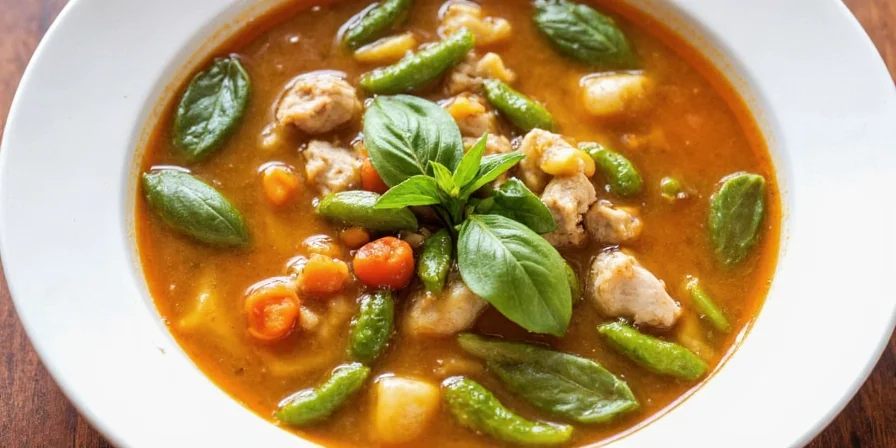
Precise Spice Measurements for Perfect Flavor Balance
Getting the spice balance right is crucial for authentic chicken basil soup. This table provides exact measurements for consistent results every time:
| Spice/Ingredient | Function | Exact Measurement |
|---|---|---|
| Fish sauce | Umami foundation | 3 tablespoons |
| Oyster sauce | Richness and depth | 1 tablespoon |
| Bird's eye chilies | Authentic heat | 1-2 per serving |
| Soy sauce | Color and complexity | 1 tablespoon |
| Sugar | Balancing sweetness | 1 teaspoon |
| Kaffir lime leaves | Signature citrus note | 2 leaves |
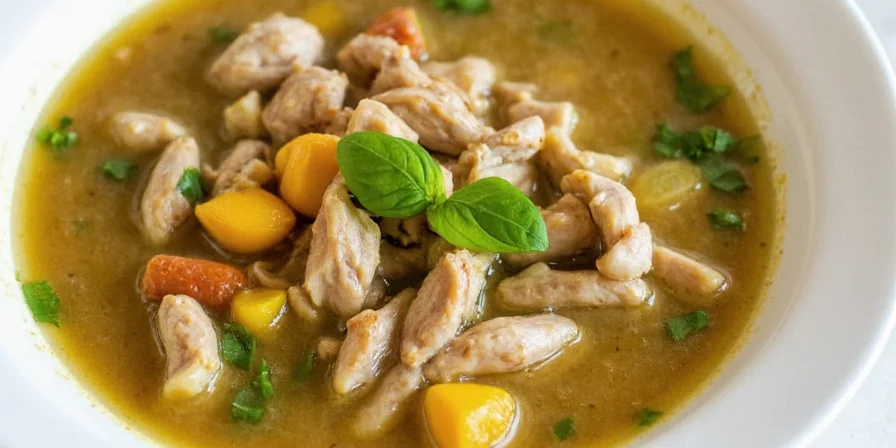
Professional Tips for Restaurant-Quality Results
- Chicken selection matters: Use boneless thighs instead of breast for more flavor and tenderness that won't dry out during cooking.
- Basil variety is critical: Thai basil (holy basil) has a distinctive anise flavor that Italian basil cannot replicate. Find it at Asian markets.
- Heat control: Never boil the soup after adding basil - the residual heat is enough to release its flavor without making it bitter.
- Layering technique: Add fish sauce while sautéing aromatics to deepen its flavor profile before adding liquid ingredients.
- Customization guide: For mild version: use ½ chili per serving. For extra spicy: add 1 additional chili and ½ tsp chili oil at the end.
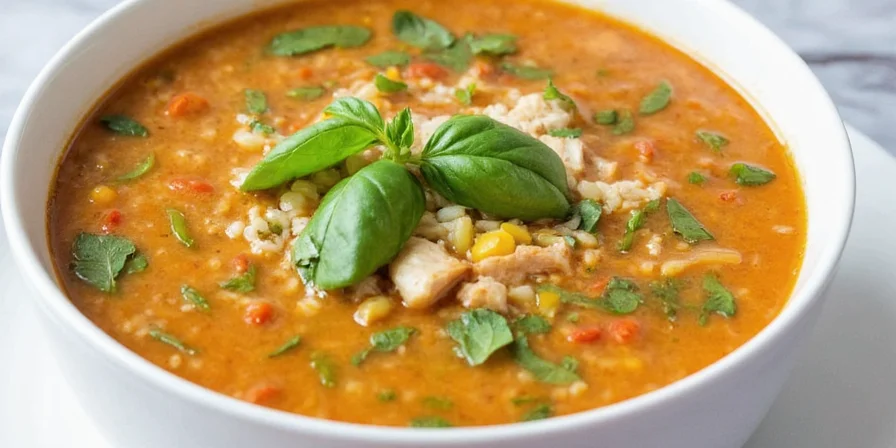
Avoid These 4 Common Chicken Basil Soup Mistakes
| Mistake | Why It Ruins Your Soup | Professional Fix |
|---|---|---|
| Using Italian basil instead of Thai basil | Lacks the distinctive anise flavor essential to authentic taste | Find Thai basil at Asian markets or substitute with regular basil plus ¼ tsp anise seed |
| Boiling after adding basil | Cooks out delicate flavors and turns basil bitter | Turn off heat before adding basil and let residual heat wilt it |
| Adding all sauce at once | Creates flat, one-dimensional flavor profile | Layer sauces: fish sauce with aromatics, others with broth |
| Overcooking chicken | Results in tough, dry meat | Sear chicken briefly, then finish cooking in broth (8-10 min) |
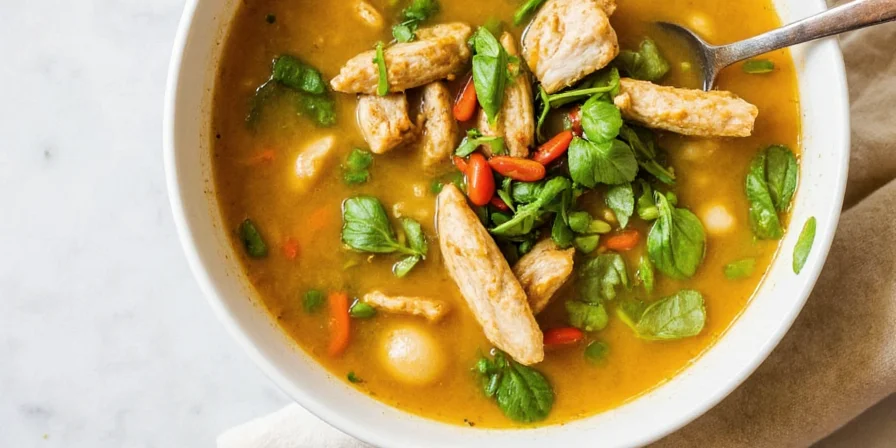
Authentic Regional Variations
While Thai-style is most popular, chicken basil soup has regional variations across Southeast Asia:
- Thai Gaeng Jeut Bai Kaprow: Features holy basil, bird's eye chilies, and a clear broth with minced chicken. Served with a fried egg on top.
- Vietnamese Canh Hé Lá Hùi Tiế́u: Lighter version with cilantro instead of basil and minimal spices, focusing on clean chicken flavor.
- Indonesian Sop Ceker: Includes chicken feet for gelatinous texture, with turmeric and lemongrass added to the broth.
- Home Chef Modification: For weeknight convenience: Use pre-cooked rotisserie chicken and reduce cooking time to 15 minutes.

Perfect Serving Techniques
Authentic Thai restaurants serve chicken basil soup with these presentation standards:
- Serve in wide, shallow bowls to showcase ingredients
- Place whole basil leaves on top for visual appeal
- Offer lime wedges on the side for diners to adjust acidity
- Never mix rice into the soup - serve jasmine rice separately
- For extra flair: Float a few whole chilies on the surface
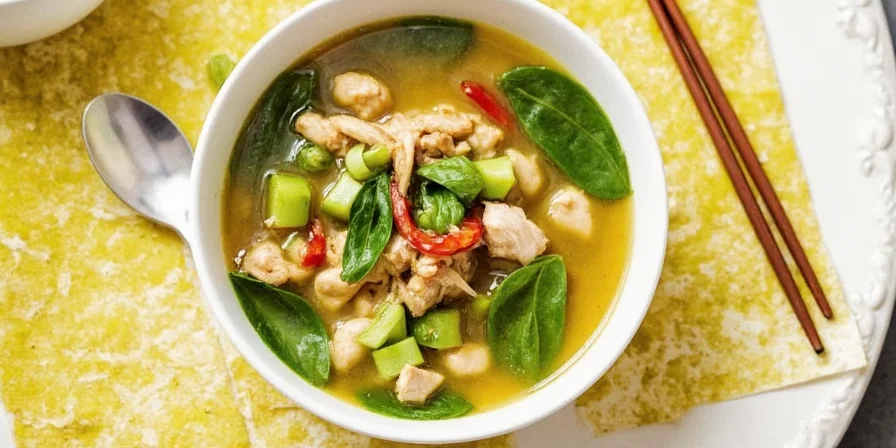
Storage and Reheating Guidelines
For best results when making ahead:
- Refrigeration: Store in airtight container for up to 3 days (keep basil separate)
- Freezing: Freeze broth and chicken separately for up to 2 months (add fresh basil when reheating)
- Reheating: Warm gently on stove (not microwave) and add fresh basil at the end
- Reviving leftovers: Add ¼ cup fresh broth when reheating to restore proper consistency
Frequently Asked Questions
What's the difference between Thai basil and holy basil in this recipe?
Thai basil (bai horapa) has a licorice flavor and purple stems, while holy basil (bai kaprow) is spicier with peppery notes. For authentic chicken basil soup, holy basil is traditional, but Thai basil makes an acceptable substitute when holy basil isn't available.
How can I make this soup less spicy without losing flavor?
Reduce chilies to ½ per serving and add 1 teaspoon of palm sugar. Never use dairy as it conflicts with Southeast Asian flavors. The sugar balances heat while preserving authentic taste profile.
Is there a vegetarian substitute that maintains authentic flavor?
For vegetarian version: Replace chicken with firm tofu, use mushroom broth, and substitute fish sauce with 2 tbsp soy sauce plus 1 tsp mushroom powder. Add 1 sheet of nori for umami depth.
Why does my homemade version taste different from restaurant versions?
Professional kitchens use high-heat wok cooking that creates 'wok hei' (breath of the wok). To approximate this at home: preheat your pot thoroughly, cook in small batches, and use minimal oil to achieve proper sear without steaming the ingredients.

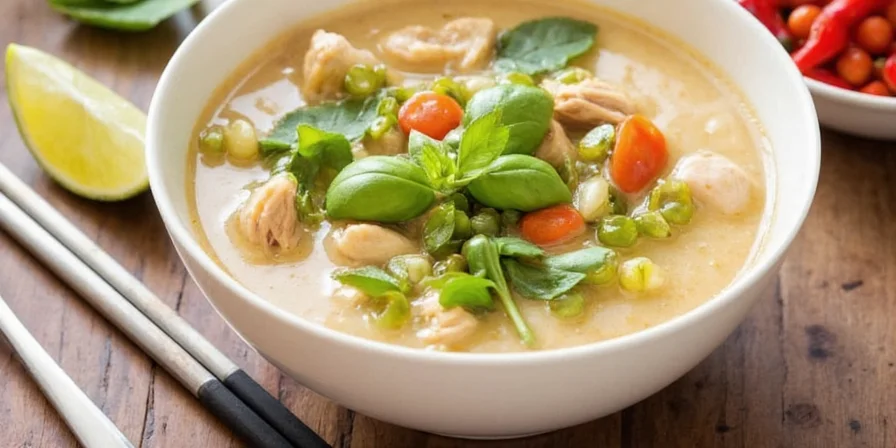









 浙公网安备
33010002000092号
浙公网安备
33010002000092号 浙B2-20120091-4
浙B2-20120091-4